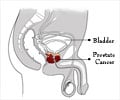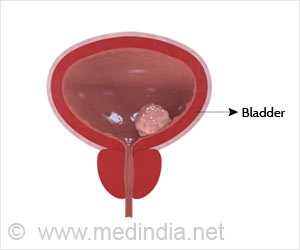Changes in benign tissues next to prostate tumors may provide an early warning for patients at higher risk for biochemical recurrence after a radical prostatectomy.

‘Changes in benign tissues next to prostate tumors may provide an early warning for patients at higher risk for biochemical recurrence after a radical prostatectomy.’





"In a sense, this study is validating what a lot of people think regarding these cancers - that there is a field effect, as if the tumor has hard-to-see tentacles that can affect the patient and outcomes," said Anant Madabhushi, the F. Alex Nason professor II of biomedical engineering at Case Western Reserve and leader of the research. Madabhushi worked with Case Western Reserve's George Lee, a research assistant professor, and Sahirzeeshan Ali, a PhD student, and Johns Hopkins Medical Institutions' Robert W. Veltri, associate professor of urology, and Jonathan I. Epstein, the Reinhard Professor of Urologic Pathology. Their study is published in the journal European Urology Focus.
The researchers analyzed records from 70 patients who underwent radical prostatectomies from 2000 to 2004 with up to 14 years follow-up. They digitized images of the resected prostate specimens and analyzed the tumor regions and surrounding tissue that appeared to be benign.
Of the group studied, 22 suffered from biochemical recurrence, metastasis or died.
The scientists used computers to search for and identify image features that may be undetectable with the human eye, but which may correlate with a biochemical recurrence. They used the top 10 features to develop a risk score.
Advertisement
Among the risk calculators used to assess prostate cancer recurrence is a nomogram of variables known to influence recurrence, and a Gleason score, which is based on the cancer tissue pattern compared to normal tissue. "We were able to do better than nomograms and the Gleason score," Madabhushi said.
Advertisement
All of the specimens and images used in this study came from Johns Hopkins. To validate the computer image analysis is universal, the researchers will test images and specimens from hospitals in Cleveland.
"We know information from different labs tend to be slightly different," Madabhushi said. "We'll see how the image analysis handles these variables."
The researchers suggest that if the features they identified prove to be reliable indicators, that they be used in combination with the traditional tools.
"There's a clear path to a clinical/translational test," Madabhushi said. "There's no destruction of tissue - nothing to stop us from analyzing the images and specimens and coming up with a risk score."
Source-Eurekalert

![Prostate Specific Antigen [PSA] & Prostate Cancer Diagnosis Prostate Specific Antigen [PSA] & Prostate Cancer Diagnosis](https://images.medindia.net/patientinfo/120_100/prostate-specific-antigen.jpg)









